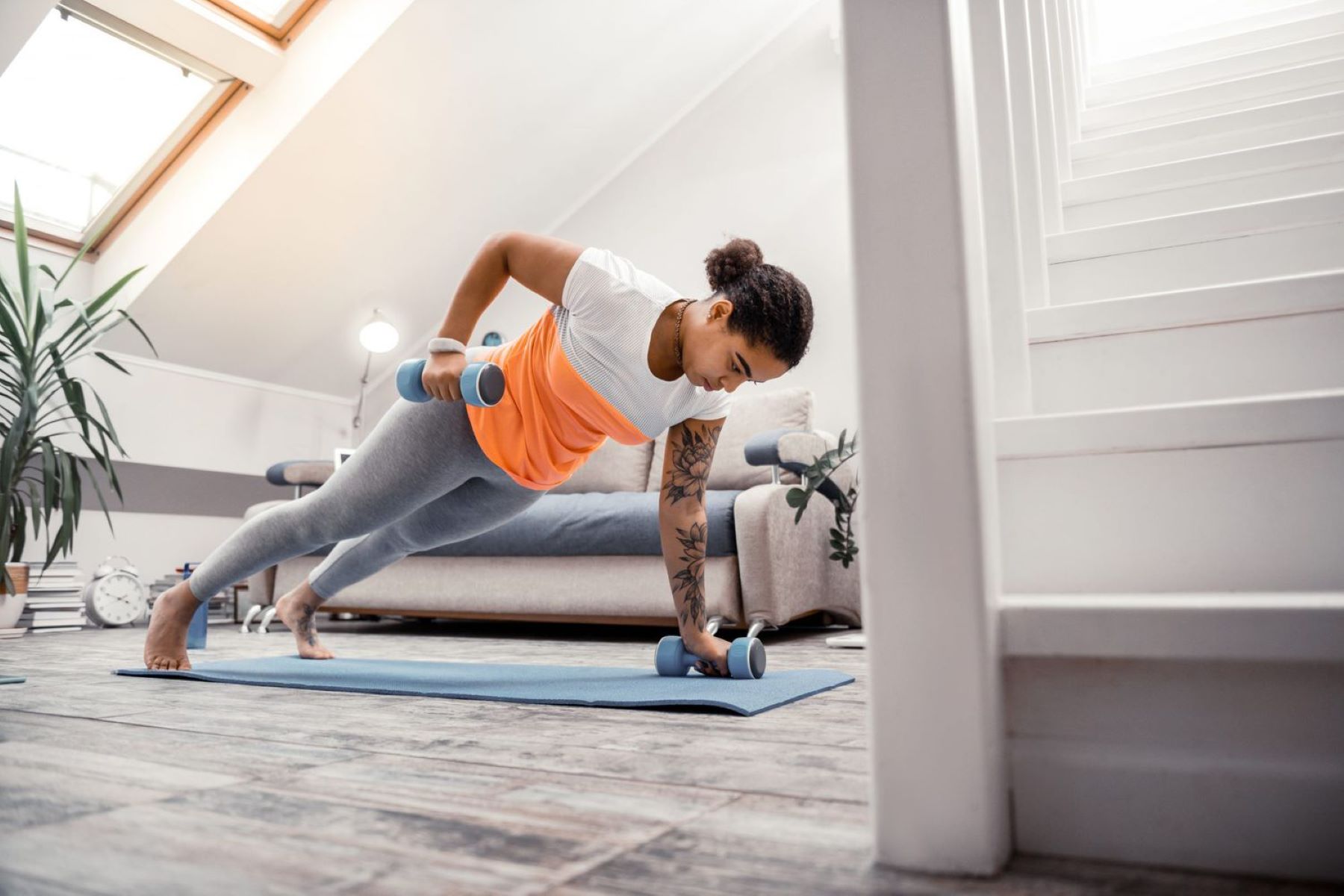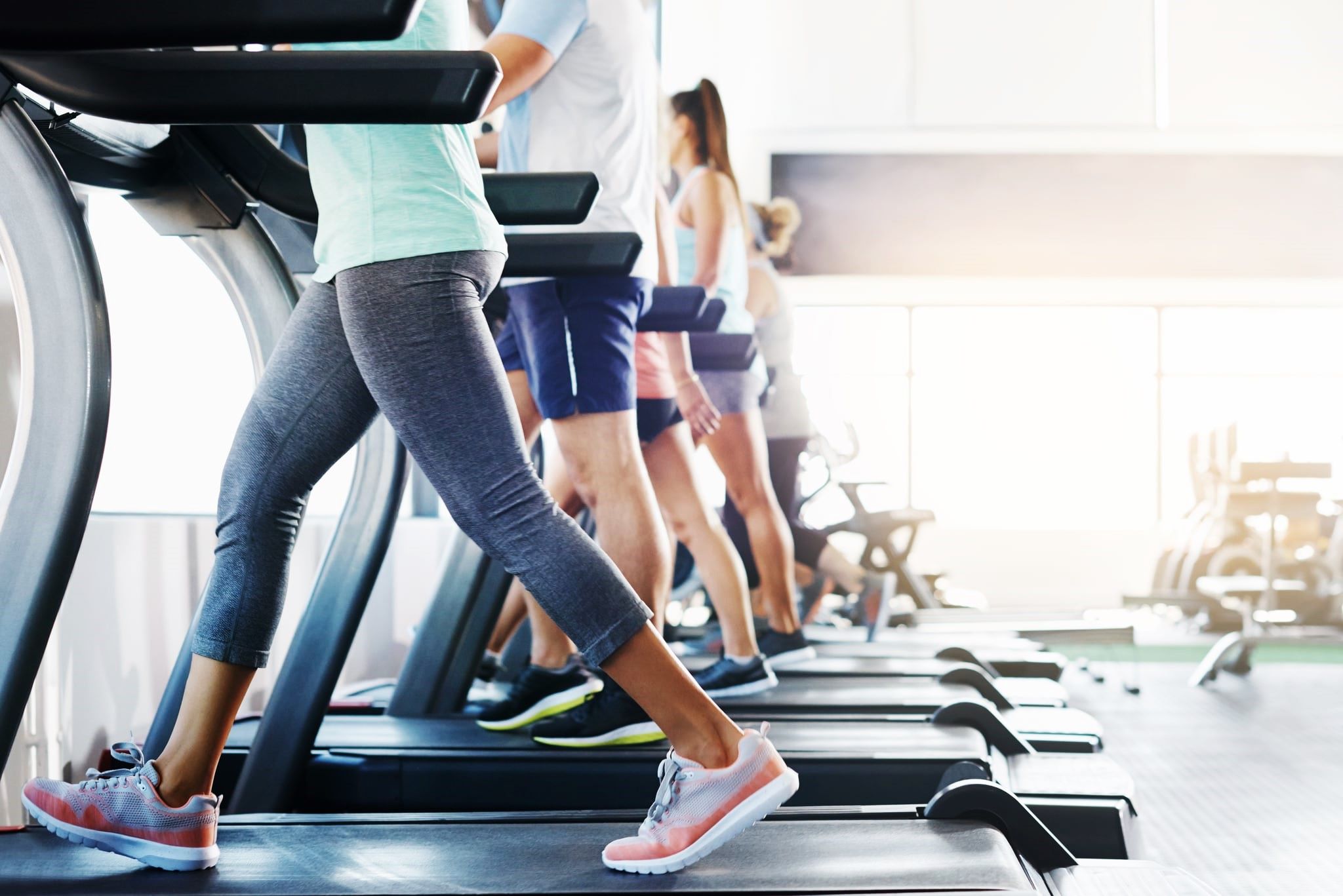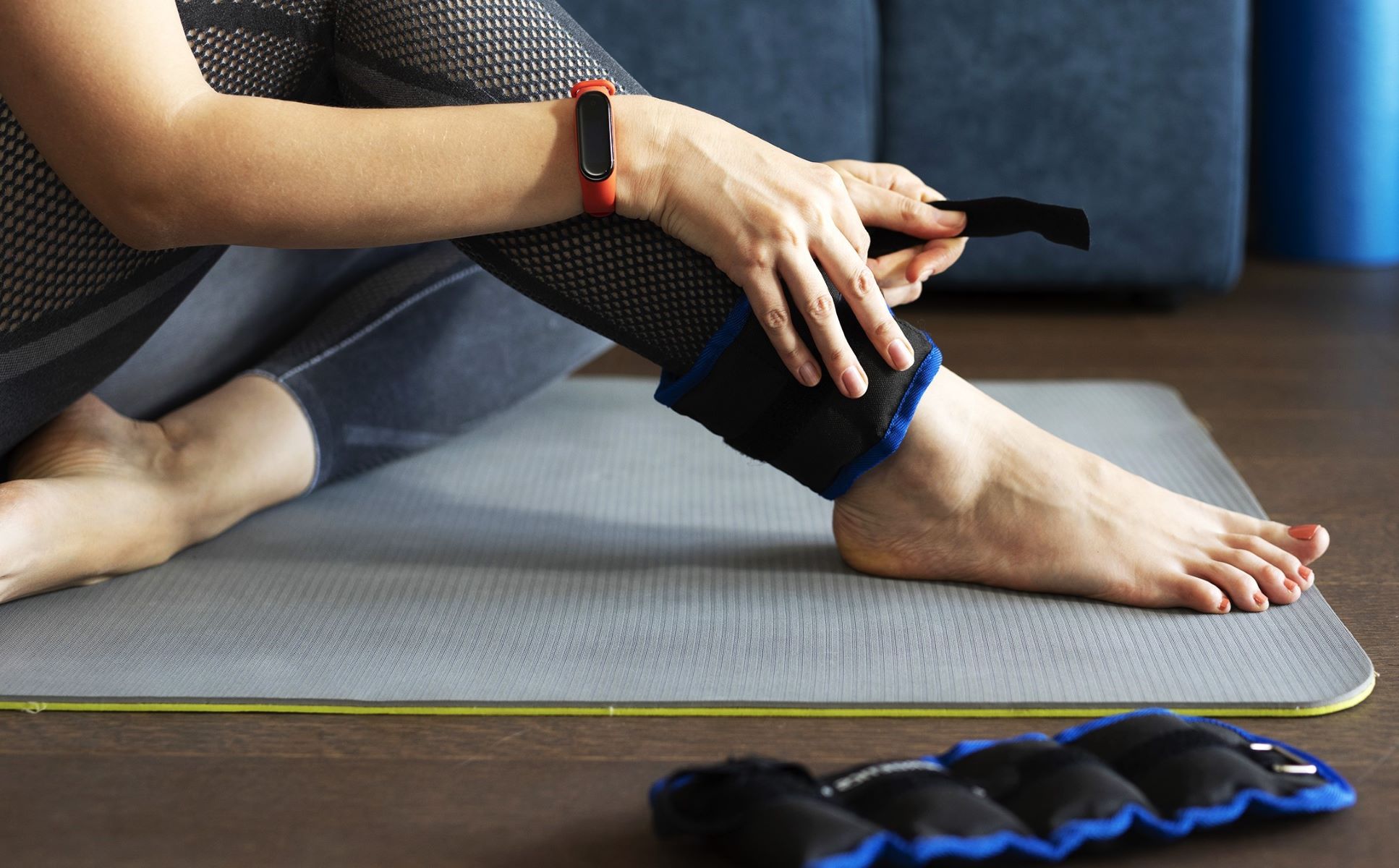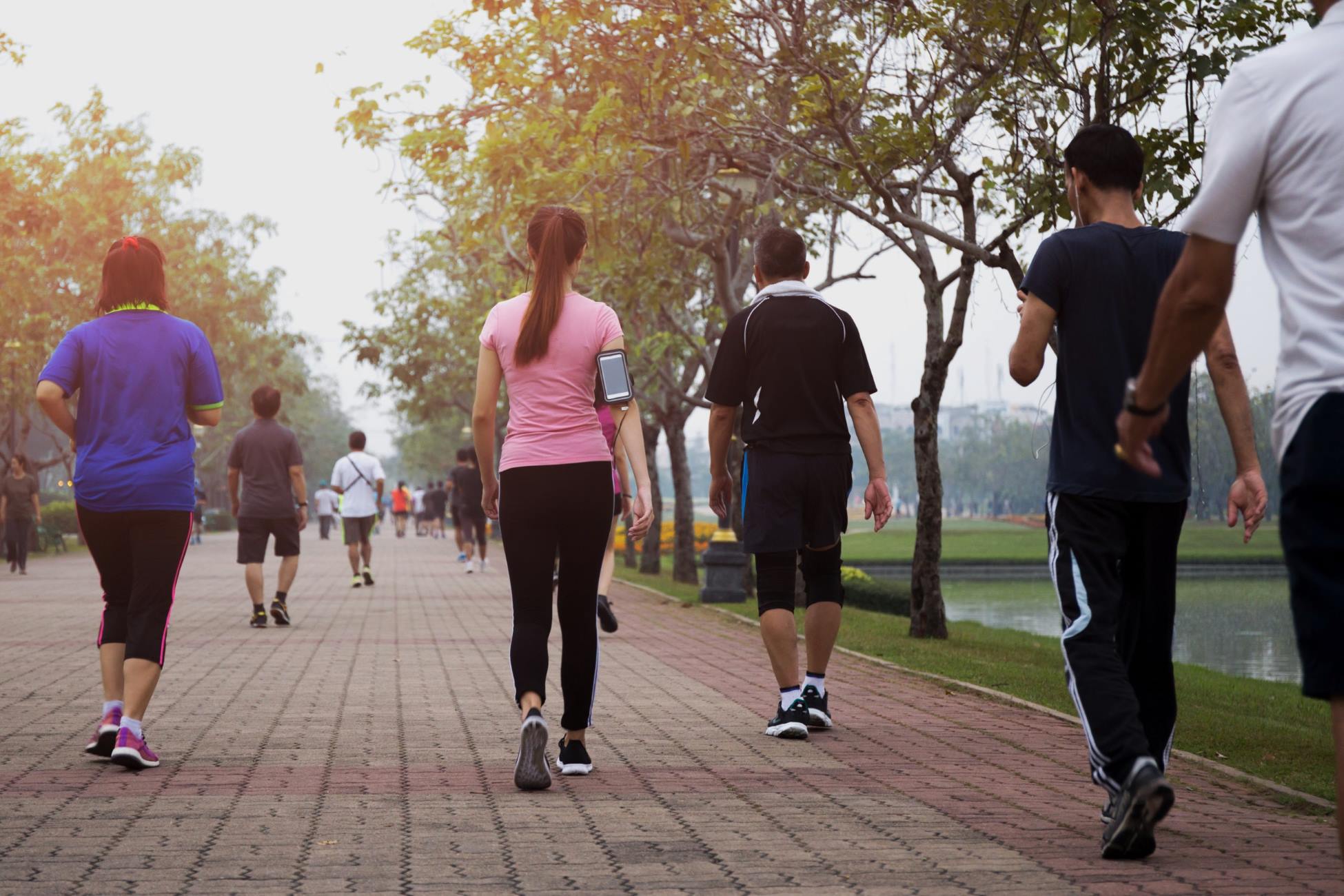Home>Training & Techniques>Cross-Training>Staying Fit Indoors: Effective Workouts For Runners


Cross-Training
Staying Fit Indoors: Effective Workouts For Runners
Published: February 20, 2024
Discover effective cross-training workouts for runners to stay fit indoors. Keep your fitness routine on track with these indoor exercises.
(Many of the links in this article redirect to a specific reviewed product. Your purchase of these products through affiliate links helps to generate commission for Therunningadvisor.com, at no extra cost. Learn more)
Table of Contents
- Benefits of Indoor Workouts for Runners
- Essential Equipment for Indoor Running Workouts
- Dynamic Warm-Up Exercises for Indoor Running
- High-Intensity Interval Training (HIIT) for Runners
- Strength Training for Runners: Best Indoor Exercises
- Cross-Training Options for Runners
- Cool-Down and Stretching Routine for Indoor Workouts
Benefits of Indoor Workouts for Runners
When the weather turns unfavorable or time constraints make it challenging to hit the pavement, indoor workouts offer a convenient and effective alternative for runners. Embracing indoor training not only ensures consistent exercise but also presents a myriad of benefits tailored to the specific needs of runners.
Read more: Effective Circuit Workouts For Runners
1. Weather Immunity
Indoor workouts shield runners from the unpredictable and often harsh outdoor elements. Whether it's scorching heat, heavy rain, or freezing temperatures, indoor training provides a controlled environment, allowing runners to maintain their regimen regardless of the weather conditions.
2. Injury Prevention
Running on hard surfaces can exert significant impact on the joints and muscles, potentially leading to overuse injuries. Indoor workouts, especially on cushioned treadmills or indoor tracks, offer a softer and more forgiving surface, reducing the risk of impact-related injuries and providing a safer training environment.
3. Time Efficiency
Indoor workouts eliminate the time spent traveling to and from outdoor running locations, making it a time-efficient option for busy individuals. With the convenience of an indoor setup, runners can optimize their training time, fitting in a quick session during their busy schedules without the need for extensive preparation or travel.
4. Customized Intensity
Indoor workouts enable runners to precisely control and adjust the intensity of their training. Whether it's adjusting the incline and speed on a treadmill or customizing the resistance on indoor cycling equipment, runners can tailor their workouts to match their specific training goals and fitness levels.
5. Safety and Security
In certain areas, outdoor running may pose safety concerns, especially during early mornings or late evenings. Indoor workouts provide a secure environment, offering peace of mind and ensuring that runners can focus solely on their training without worrying about external factors.
6. Diverse Training Options
Indoor facilities often offer a wide range of training equipment and classes, allowing runners to diversify their workouts. From cross-training options to strength training equipment, indoor facilities provide a comprehensive array of resources to enhance overall fitness and performance.
By recognizing and embracing the benefits of indoor workouts, runners can maintain their training momentum, overcome external obstacles, and optimize their overall fitness journey. Whether it's for consistency, injury prevention, or time efficiency, indoor training serves as a valuable complement to outdoor running, ensuring that runners can stay on track with their fitness goals regardless of external circumstances.
Essential Equipment for Indoor Running Workouts
When transitioning from outdoor to indoor running, having the right equipment is crucial for a seamless and effective workout experience. Here are the essential pieces of equipment that can elevate indoor running workouts:
1. Treadmill
A treadmill is the cornerstone of indoor running workouts. It provides a cushioned surface that reduces impact on the joints, making it an ideal option for runners looking to minimize the risk of injuries. Modern treadmills come equipped with various features such as incline settings, pre-programmed workouts, and heart rate monitoring, allowing runners to customize their training based on their fitness goals.
Read more: Gear Review: Kinomap Trainer
2. Running Shoes
Investing in a pair of high-quality running shoes designed for indoor use is essential. Indoor running shoes are specifically crafted to provide traction and support on treadmill surfaces, ensuring stability and comfort during workouts. These shoes often have a more lightweight and flexible design compared to outdoor running shoes, catering to the unique demands of indoor training.
3. Heart Rate Monitor
Monitoring heart rate during indoor running sessions is crucial for optimizing training intensity and tracking overall cardiovascular fitness. A reliable heart rate monitor, whether in the form of a chest strap or a wrist-worn device, provides real-time feedback, allowing runners to adjust their pace and effort to stay within their target heart rate zones.
4. Cooling Fan
Maintaining a comfortable workout environment is essential for indoor runners. A cooling fan positioned near the treadmill helps regulate body temperature and prevents overheating during intense workouts. Proper ventilation contributes to a more enjoyable and sustainable running experience, especially in indoor settings with limited airflow.
5. Entertainment Setup
To combat monotony and stay motivated during indoor runs, setting up entertainment options such as a tablet holder, TV, or music system can make a significant difference. Engaging in entertainment while running indoors can alleviate boredom and help runners stay focused and energized throughout their workouts.
Read more: Top Home Workouts For Runners
6. Hydration Station
Staying hydrated is just as important during indoor running as it is outdoors. Having a dedicated hydration station nearby, equipped with a water bottle and electrolyte replenishment options, ensures that runners can maintain optimal hydration levels throughout their indoor training sessions.
Equipping oneself with these essential items sets the stage for a rewarding and effective indoor running experience. By leveraging the right equipment, runners can maximize their indoor workouts, stay motivated, and achieve their fitness goals with confidence and comfort.
Dynamic Warm-Up Exercises for Indoor Running
Preparing the body for a productive indoor running session begins with a dynamic warm-up routine. These exercises not only prime the muscles and joints for the upcoming workout but also help prevent injuries and enhance overall performance. Incorporating dynamic warm-up exercises into the indoor running routine sets the foundation for a successful and fulfilling training session.
1. Leg Swings
Leg swings are an effective way to loosen up the hip flexors and hamstrings. By standing next to a support and gently swinging one leg forward and backward, runners can improve hip mobility and flexibility, preparing the lower body for the upcoming running strides.
2. High Knees
Engaging in high knees helps elevate the heart rate and activates the hip flexors and quadriceps. This dynamic movement mimics the running motion, effectively warming up the leg muscles and enhancing overall agility and coordination.
3. Butt Kicks
Butt kicks involve bringing the heels up to the glutes while jogging in place. This exercise targets the quadriceps and stretches the hip flexors, effectively preparing the lower body for the running motion while promoting flexibility and range of motion.
4. Ankle Circles
Ankle circles are instrumental in warming up the ankles and improving their mobility. By rotating the ankles in circular motions, runners can alleviate stiffness and enhance the flexibility of the ankle joints, crucial for a smooth and efficient running stride.
5. Arm Circles
Incorporating arm circles into the warm-up routine helps activate the upper body and shoulders. By performing forward and backward arm circles, runners can enhance blood flow to the upper extremities, promoting better arm swing mechanics and overall upper body readiness for the upcoming indoor running session.
6. Dynamic Lunges
Dynamic lunges combine the benefits of stretching and muscle activation. By performing alternating forward lunges with a dynamic motion, runners can engage the quadriceps, hamstrings, and glutes while promoting hip flexibility and stability, essential for a balanced and effective running stride.
Read more: The Effects Of Running On Your Body
7. Torso Twists
Torso twists are instrumental in warming up the core and improving spinal mobility. By gently rotating the upper body from side to side, runners can activate the core muscles and enhance the range of motion in the spine, facilitating better posture and overall stability during the indoor running workout.
By incorporating these dynamic warm-up exercises into the indoor running routine, runners can effectively prepare their bodies for the upcoming training session. These exercises not only enhance flexibility and mobility but also promote muscle activation and overall readiness, setting the stage for a rewarding and injury-free indoor running experience.
High-Intensity Interval Training (HIIT) for Runners
High-Intensity Interval Training (HIIT) has emerged as a game-changing approach to cardiovascular fitness, offering a potent and time-efficient method for runners to enhance their endurance, speed, and overall performance. By integrating HIIT into their indoor training regimen, runners can unlock a myriad of benefits that cater specifically to their athletic pursuits.
The HIIT Framework
HIIT involves alternating between short bursts of intense exercise and periods of active recovery or rest. For runners, this translates to engaging in rapid, high-intensity intervals followed by brief recovery periods. This structured approach challenges the cardiovascular system, elevates the heart rate, and maximizes the body's oxygen consumption, ultimately leading to significant improvements in aerobic capacity and overall running performance.
Benefits for Runners
-
Enhanced Cardiovascular Fitness: HIIT stimulates adaptations in the cardiovascular system, leading to improved heart and lung function. For runners, this translates to enhanced oxygen utilization, increased endurance, and the ability to sustain higher intensities during long-distance runs.
-
Increased Speed and Power: The explosive nature of HIIT intervals contributes to improved speed and power output. By incorporating short, intense sprints into their training, runners can enhance their sprinting abilities and overall running speed, crucial for achieving personal bests and excelling in competitive races.
-
Calorie Expenditure and Fat Loss: HIIT has been shown to be highly effective in burning calories and promoting fat loss. For runners looking to optimize their body composition and improve their power-to-weight ratio, integrating HIIT into their indoor workouts can yield significant metabolic benefits.
-
Time Efficiency: HIIT workouts are renowned for their time efficiency. By delivering substantial cardiovascular and metabolic benefits in a shorter timeframe compared to traditional steady-state cardio, HIIT allows runners to maximize their training sessions, making it an ideal option for individuals with busy schedules.
Implementing HIIT for Indoor Running
To incorporate HIIT into indoor running workouts, runners can leverage the capabilities of treadmills or indoor tracks to execute structured interval sessions. A typical HIIT session for runners may involve alternating between periods of all-out sprinting and active recovery jogs or walks. By customizing the duration and intensity of the intervals, runners can tailor their HIIT workouts to align with their current fitness levels and performance goals.
Sample HIIT Workout for Runners
- Warm-Up: Begin with a dynamic warm-up routine to prepare the body for the upcoming HIIT session.
- HIIT Intervals: Alternate between 30-60 seconds of maximum effort sprinting and 60-90 seconds of active recovery jogging or walking. Repeat this cycle for 10-15 minutes.
- Cool-Down: Conclude the session with a gradual cool-down and stretching routine to aid in recovery and flexibility maintenance.
By embracing the principles of HIIT and integrating structured interval training into their indoor running workouts, runners can elevate their fitness levels, enhance their running performance, and unlock new levels of speed, endurance, and metabolic efficiency. This strategic approach to training not only aligns with the dynamic nature of running but also empowers runners to achieve their fitness aspirations with precision and purpose.
Strength Training for Runners: Best Indoor Exercises
Strength training serves as a cornerstone for runners, offering a multitude of benefits that extend beyond pure muscular development. When performed as part of an indoor workout routine, strength training exercises play a pivotal role in enhancing running performance, preventing injuries, and promoting overall athletic resilience. By incorporating the following best indoor exercises into their training regimen, runners can fortify their musculoskeletal system, optimize their running mechanics, and elevate their capacity for enduring long-distance runs.
1. Squats
Squats are a fundamental strength training exercise that targets the quadriceps, hamstrings, glutes, and lower back muscles. When performed with proper form and technique, squats contribute to improved lower body strength, stability, and power, essential for generating propulsion during running strides. Variations such as goblet squats or jump squats can add diversity and intensity to the workout, further enhancing muscular endurance and explosive strength.
2. Lunges
Lunges are instrumental in strengthening the quadriceps, hamstrings, glutes, and hip flexors while promoting balance and stability. By incorporating forward, reverse, or walking lunges into their indoor training routine, runners can address muscular imbalances, enhance single-leg strength, and improve overall lower body coordination, crucial for maintaining optimal running mechanics and minimizing the risk of overuse injuries.
3. Deadlifts
Deadlifts are a compound exercise that targets the posterior chain, including the hamstrings, glutes, and lower back. By performing deadlifts with proper form and technique, runners can develop essential hip and lower back strength, improve overall posture, and fortify the muscles responsible for maintaining stability and power output during running. Variations such as Romanian deadlifts or single-leg deadlifts can provide targeted muscular engagement and functional strength development.
4. Calf Raises
Calf raises focus on strengthening the calf muscles, crucial for providing propulsion and push-off power during running strides. By performing calf raises on a raised platform or using bodyweight resistance, runners can enhance calf muscle endurance, improve ankle stability, and mitigate the risk of calf-related injuries, contributing to a more resilient and efficient running gait.
5. Planks
Planks are a foundational core strengthening exercise that targets the abdominal muscles, obliques, and stabilizing muscles of the spine and pelvis. By incorporating planks into their indoor strength training routine, runners can improve core stability, enhance posture, and reduce the likelihood of developing running-related lower back discomfort. Variations such as side planks or dynamic plank movements can add diversity and progressive challenge to the core strengthening regimen.
By integrating these best indoor strength training exercises into their running routine, athletes can cultivate a robust foundation of muscular strength, endurance, and stability, essential for optimizing running performance and minimizing the risk of overuse injuries. This strategic approach to strength training not only complements the dynamic nature of running but also empowers runners to achieve their fitness aspirations with resilience and confidence.
Cross-Training Options for Runners
Cross-training serves as a valuable complement to a runner's training regimen, offering diverse and dynamic workout alternatives that not only enhance overall fitness but also contribute to injury prevention and performance improvement. By incorporating cross-training into their indoor workout routine, runners can unlock a multitude of benefits while diversifying their training modalities.
1. Cycling
Indoor cycling, whether through stationary bikes or cycling trainers, provides an excellent cross-training option for runners. Cycling engages different muscle groups, particularly the quadriceps, hamstrings, and calves, offering a low-impact yet highly effective cardiovascular workout. By incorporating cycling sessions into their training routine, runners can improve leg strength, enhance aerobic capacity, and promote muscular endurance while minimizing the impact on weight-bearing joints.
2. Swimming
Swimming stands out as a full-body, low-impact cross-training activity that offers a unique set of benefits for runners. Engaging in swimming sessions not only provides a comprehensive cardiovascular workout but also strengthens the upper body, core muscles, and stabilizing muscles, contributing to overall muscular balance and resilience. Additionally, the buoyancy of water reduces the impact on joints, making swimming an ideal cross-training option for runners seeking active recovery and injury prevention.
3. Rowing
Incorporating indoor rowing into the cross-training repertoire offers runners a dynamic and engaging full-body workout. Rowing targets the back, shoulders, arms, and core muscles while providing a cardiovascular challenge that complements running training. By integrating rowing sessions, runners can enhance upper body strength, improve posture, and promote overall cardiovascular conditioning, fostering a well-rounded approach to fitness and performance enhancement.
4. Yoga and Pilates
Yoga and Pilates serve as invaluable cross-training modalities for runners, focusing on flexibility, mobility, and core strength. These mind-body practices not only aid in recovery and injury prevention but also promote mental focus, body awareness, and muscular balance. By incorporating yoga and Pilates sessions into their indoor training routine, runners can improve flexibility, enhance core stability, and cultivate a heightened sense of body alignment and mindfulness, essential for maintaining optimal running mechanics and overall well-being.
5. HIIT Workouts
High-Intensity Interval Training (HIIT) extends beyond its role in running-specific training and serves as a versatile cross-training option. By engaging in HIIT workouts that incorporate bodyweight exercises, plyometrics, and functional movements, runners can enhance overall athleticism, agility, and metabolic conditioning. These dynamic and time-efficient workouts not only complement running training but also contribute to improved muscular power, endurance, and metabolic efficiency, fostering a well-rounded approach to fitness and performance optimization.
By embracing a diverse array of cross-training options, runners can expand their fitness horizons, mitigate the risk of overuse injuries, and elevate their overall athletic capabilities. The integration of cross-training into the indoor workout routine not only fosters physical diversity and resilience but also empowers runners to achieve holistic fitness and performance excellence.
Cool-Down and Stretching Routine for Indoor Workouts
As runners conclude their indoor training sessions, dedicating time to a comprehensive cool-down and stretching routine is paramount for promoting recovery, flexibility, and injury prevention. This essential post-workout regimen not only aids in the gradual transition from intense exercise to a state of rest but also plays a pivotal role in maintaining overall muscular health and mobility. By incorporating the following elements into their cool-down and stretching routine, runners can optimize their indoor workouts and set the stage for enhanced performance and well-being.
1. Gradual Deceleration
The cool-down phase begins with a gradual deceleration of the workout intensity. For runners utilizing treadmills, this involves reducing the speed and incline settings to ease the transition from running to walking. This gradual reduction in intensity allows the heart rate to gradually return to a resting state, preventing abrupt cardiovascular fluctuations and promoting a smooth recovery process.
2. Walking and Deep Breathing
Following the workout, engaging in a brief period of walking at a relaxed pace can aid in the dissipation of accumulated metabolic byproducts and facilitate the return of blood flow to the extremities. Concurrently, focusing on deep breathing techniques can promote relaxation and aid in the removal of carbon dioxide, contributing to a sense of calm and recovery.
3. Static Stretching
Incorporating static stretching exercises targeting major muscle groups is instrumental in promoting flexibility and preventing post-exercise muscle tightness. Key areas to focus on include the quadriceps, hamstrings, calves, hip flexors, and glutes. Holding each stretch for 15-30 seconds allows the muscles to elongate and relax, aiding in the reduction of post-workout muscle tension.
4. Foam Rolling
Utilizing a foam roller to perform self-myofascial release can further aid in muscle recovery and alleviate muscular tightness. By targeting specific muscle groups with the foam roller, runners can address areas of localized tension and promote improved blood circulation, ultimately enhancing overall muscular recovery and suppleness.
5. Dynamic Mobility Drills
Incorporating dynamic mobility drills into the cool-down routine can help restore joint mobility and enhance range of motion. Dynamic movements such as leg swings, arm circles, and torso twists promote blood flow to the muscles and joints while preparing the body for the subsequent stretching exercises.
6. Mindful Relaxation
Concluding the cool-down and stretching routine with a few moments of mindful relaxation or meditation can provide a mental and emotional transition from the intensity of the workout to a state of calm and rejuvenation. This practice fosters mental clarity and aids in stress reduction, contributing to a holistic approach to post-workout recovery.
By embracing a comprehensive cool-down and stretching routine, runners can optimize their indoor workouts, promote muscular recovery, and maintain overall flexibility and mobility. This strategic approach not only supports injury prevention and muscular health but also fosters a balanced and sustainable fitness journey, empowering runners to achieve their performance goals with resilience and longevity.





